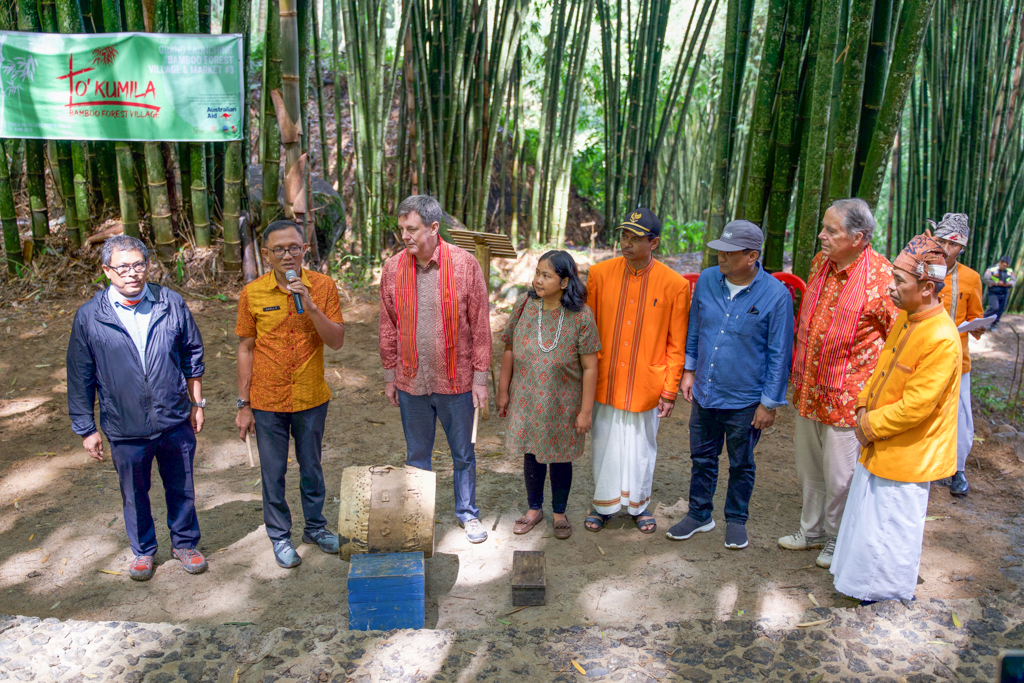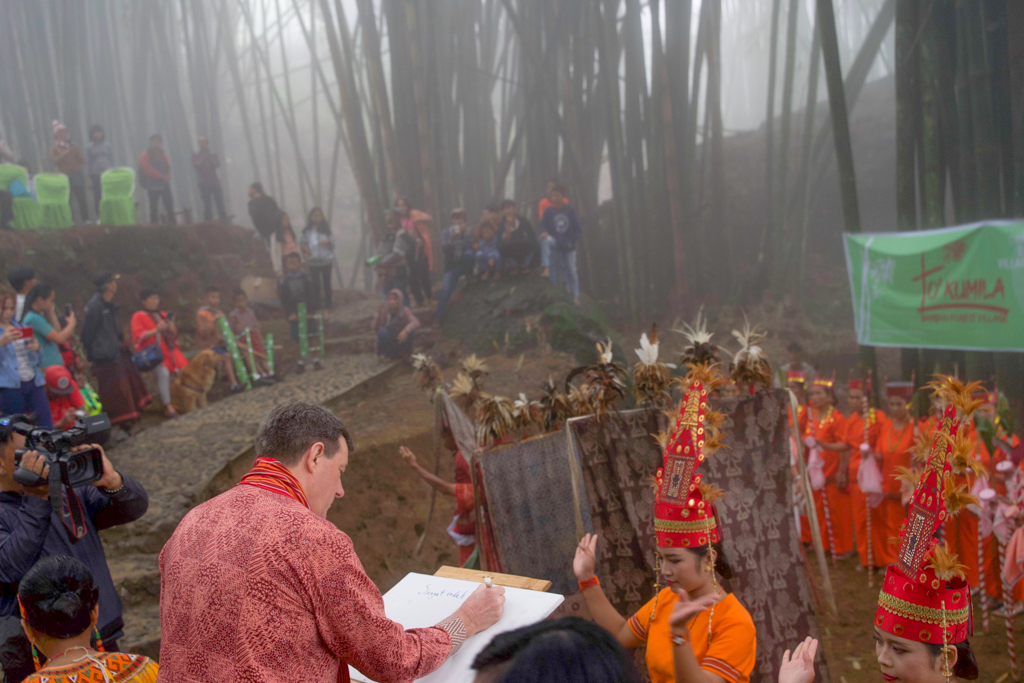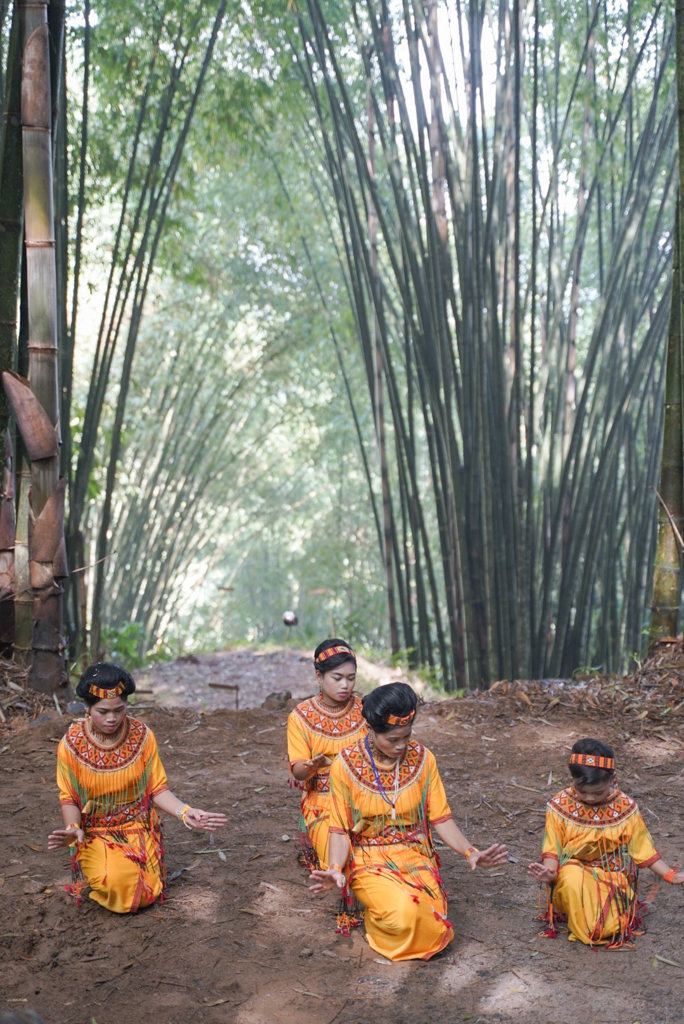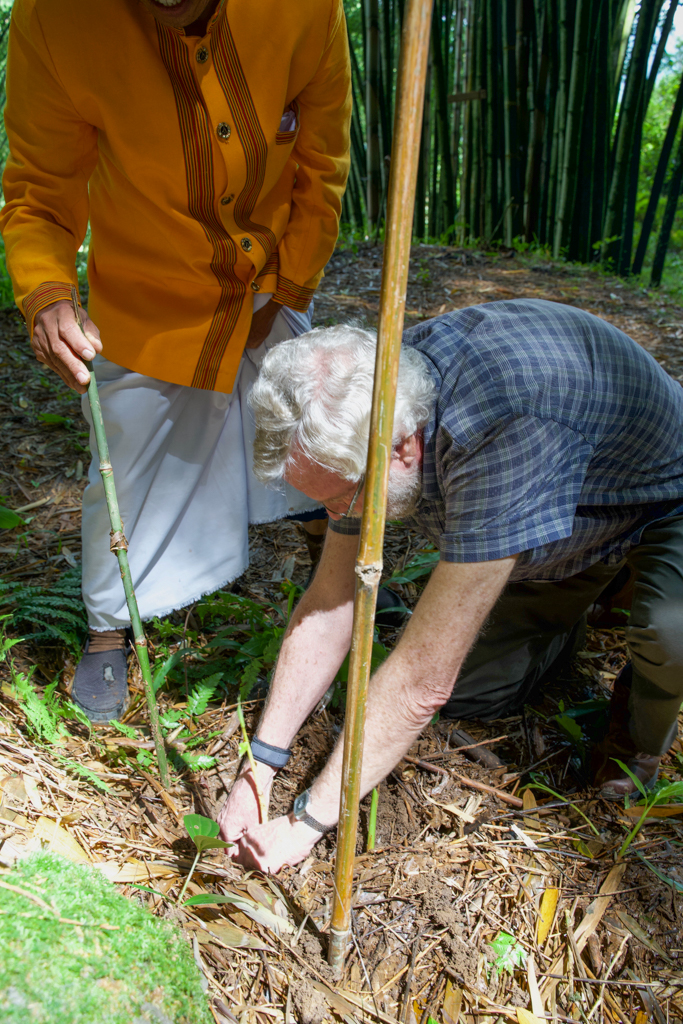As I have said in previous blog posts, I see tourism as one of the most promising sectors for development throughout eastern Indonesia. This year we have focused much of our economic diplomacy work on trying to build links with Australia in this sector. We held the Australia Eastern Indonesia Tourism Forum 4 – 5 March this year, and our sister-post - the Australian Consulate-General in Bali – held the Island Tourism Forum in Lombok 29 – 30 April: both events brought together tourism experts, practitioners and business people to explore how we can raise awareness and build partnerships that will result in sustainable tourism development and growth in the eastern provinces of Indonesia.
We also support sustainable tourism in eastern Indonesia with small grants from our Development Assistance Program (DAP). In 2018 we agreed to support a proposal from the Suloara Village Tourism Foundation in North Toraja to help the To’Kumila community preserve its ancient bamboo forest and develop it as a sustainable tourism resource.

Putri and I visited this project in November 2018 shortly after it had begun. This ten hectare forest is located in Tonga Riu village, a drive of around one hour to the north of Rantepao. The journey takes you upwards through sculptured rice field terraces peppered with huge rocks, past large rock-graves, new churches and through pretty little villages. It is not an easy road to travel, with plentiful potholes and the occasional landslide making passage a challenge. But on reaching the ridge line at the village of Batu Tomonga you can stop briefly at one of several cafes and take in the view back down to Rantepao – if you get there early enough the valley below is filled with mist; and when it rises the scenery is stunning, looking south over the township towards the mountains that divide Toraja from the rest of South Sulawesi.
A drive of around fifteen minutes to the west from Batu Tomonga takes you to the village of Tonga Riu, in which is located the hamlet of To’Kumila, population 290 people.
Last November we were given a guided tour of the hamlet and the forest. We drove half-way up a hill and parked among a small collection of traditional Torajan houses (known as tongkonan) then walked along a gently rising road to the top of the forest. It was quiet and green and the bamboo towered over us, in some places blocking out the sunlight. A group of ancient menhir stones signifying an old burial site, dotted a space near the top of the hill.

Six months later the project organisers have now completed training seminars with the villagers and the local government has put in basic infrastructure, and everything is ready to go. So in June we returned for the official launching of the To’Kumila Bamboo Forest, and this time we brought with us the 27 participants in the 2019 Australian Institute for International Affairs (AIIA) study tour to Indonesia. It was not an easy journey for the Australians, who had to fly from Australia to Denpasar or Jakarta, then to Makassar, then to Bua airport near Palopo, then take a 2½ hour bus journey through the mountains to Rantepao. Then the next day a one hour drive up windy, bumpy roads to the To’Kumila hamlet. But by all accounts they were excited by the opening ceremony, several telling me that it was an experience they will never forget.
The launching of the bamboo forest project was indeed a magical experience. We arrived at the foot of the hill on which the forest is located, then walked up some newly constructed steps to a performance space in the middle of the forest. We were escorted by women in colourful traditional costumes, men wearing sack-like cloaks and head dresses symbolising the buffalo that are so important in Torajan culture, all the while singing eerie songs from the past. The stage was a flat piece of dirt under a huge, cathedral-like canopy of bamboo. We were seated slightly above and overlooking the stage, and the mist began rising up through the bamboo, making us shiver a little. The mesmerising music continued (see a video here: https://twitter.com/KonJenMakassar/status/1142337464641576960).

The AIIA participants were eventually seated and the formalities then began. Of course, no matter how magical the event, speeches are an essential element in Indonesia. But they were well-deserved speeches, coming from the key players in this project: the leaders of the Suloara Tourism Village Institute (Pak Danny, Pak Josef and Ibu Nyoman); the local Tourism Department (Pak Harli); and the village headman (Pak Petrus). I praised the village for taking on this project, and also recognised their decision to ban single-use plastic items, to ban smoking in the forest, and to encourage respect for the environment and local traditions. A few hundred locals from Rantepao had also made the journey up to the Bamboo Forest, and listened intently.
Many of the visitors later walked further up the hill to the Bamboo Market which the villagers hold once every two months. There you can buy bamboo cutlery, bamboo tea-pots and mugs, and various traditional Torajan foods. The AIIA delegates were also invited to plant bamboo seedlings in the forest, which they did with enthusiasm.

***
Our contribution towards this project was modest, but has helped seed further in-kind and monetary contributions from other organisations and individuals. I see it as a model for future, similar projects that we would like to support at the community level. The “Tourism Village” concept (Desa Wisata) is slowly taking off in eastern Indonesia (eg see blog no. 46), and is a practical way for villagers to learn about the benefits and risks of tourism, and hopefully to find a way to make a fair living from the amazing natural and cultural assets that so many communities have across the archipelago.
The people of To’Kumila are now committed to preserving the bamboo forest that their ancestors have bequeathed to them, and are looking forward to earning a sustainable income from the visitors that will come to their beautiful village. I encourage you to visit North Toraja, and to make the journey up through the rice fields and the clouds to the lovely To’Kumila Bamboo Forest!
June 2019
